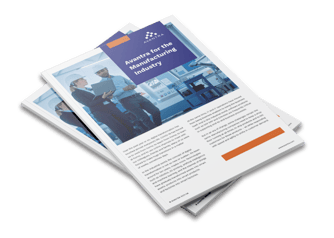4 min read
What does President Biden’s executive order on supply chains mean for SAP digital transformation?
By: Marlene Hopewell on Apr 21, 2021 10:54:03 PM

On February 24th, 2021, President Biden signed an executive order for a sweeping review of critical US supply chains. Shortages of protective gear for American healthcare workers seen in the early months of the Covid-19 pandemic “should never have happened,” said Biden as he signed the order. Now, he and his administration have set their sights on tackling a far wider range of supply-chain risks.
Their timing is apposite, because global supply chains are in chaos. Major automotive giants, including Ford and General Motors, continue to struggle in the face of a worldwide semiconductor shortage, which has forced them and many competitors to curb production, cancel shifts and even temporarily close down some factories. Device makers like Samsung and Apple are suffering, too, with Taiwanese research firm TrendForce estimating a global reduction in smartphone production of 5% by the second quarter of 2021.
Meanwhile, a global scarcity of available shipping containers and delays at key ports have sent transportation costs skyrocketing and left companies waiting many weeks for imports. These problems have been blamed for Nike’s lackluster third-quarter results, for example, and limited availability of cheese, olive oil and seafood at big-box retailer Costco. The Texas storms, the blocking of the Suez Canal by the giant container ship Ever Given, and hold-ups in vaccine deliveries have merely added to the general mayhem.
The executive order issued by President Biden calls for two things:
First, it demands a 100-day federal review of four key product supply chains:
pharmaceutical ingredients, rare earth minerals,
semiconductor chips and large-capacity batteries.
Second, it calls for a longer-term review of the supply chains in the defense,
public health, communications technology, energy,
transportation and food production sectors.
The executive order issued by President Biden calls for two things. First, it demands a 100-day federal review of four key product supply chains: pharmaceutical ingredients, rare earth minerals, semiconductor chips and large-capacity batteries. Second, it calls for a longer-term review of the supply chains in the defense, public health, communications technology, energy, transportation and food production sectors. These reviews will attempt to identify vulnerabilities and provide recommendations to fortify US supply chains.
Time for a Technology Review
One key area of potential vulnerability that manufacturing companies would be wise to tackle quickly are any shortcomings in their own supply-chain systems. Enterprise resource planning (ERP) systems such as SAP have a crucial role to play in this, so supply chain resilience should be a key part of any manufacturing company’s SAP digital transformation program.
Manufacturing companies rely on SAP not only to manage critical business data relating to suppliers, but also capture information on supply-chain disruptions, to understand how they are unfolding and to systematically assess the impact they are likely to have on production or deliveries.
In other words, supply-chain visibility is a key SAP deliverable – but whatever’s going on in the outside world, you can’t hope to achieve that visibility if your SAP system suffers its own disruption. Any downtime in its SAP system leaves a manufacturing company unable to identify and mitigate potential supply-chain risks and vulnerabilities - which are abundant right now - and to proactively problem-solve to mitigate them. It could even be disastrous.
3 Unexpected SAP Cloud Challenges in the
Manufacturing Industry and How to Conquer Them
Download the Whitepaper Now >>
Companies working hard to reduce risks in their supply chains should be working equally hard to reduce the risks of software failure. Their SAP landscapes are likely to be a whole spider’s web of versions, components and integrated add-ons, including critical supply planning, inventory management and logistics applications.
Our cloud-based technology is engineered to provide real-time monitoring, performance checks and automated responses for all of these, and bring reports and metrics relating to them into a single consolidated view for SAP operations staff. After all, as we like to say, “Unless you can see the whole elephant, you can’t tell what ails the elephant.”
And by automating many of the routine fixes that these systems require, we help manufacturers not only mitigate risks to supply-chain systems, but also divert the activities of scarce, costly SAP admin talent to more value-add activities.
Manufacturing Industry Whitepaper >>
Recovery Time
With prospects of an economic recovery on the horizon, now is a good time for manufacturers to tackle any weaknesses in their SAP operations that might otherwise derail supply chains.
After all, supply chain risks aren’t likely to disappear. They’ve always been a threat to manufacturing companies, whether triggered by global pandemics, economic fluctuations, geopolitical instability, natural disaster or fickle consumer behavior. They will continue to be.
But President Biden’s executive order can be seen as a positive sign - a turning point that heralds a ‘new normal’ of economic recovery and growth. What better time, then, for manufacturing companies to set their SAP digital transformation strategy for greater supply-chain resiliency, in order to capitalize on what comes next?
Related Posts
How to Handle Supply Chain Disruptions and Force Majeure - COVID-19
A legal view of liability and force majeure around supply chain and production disruptions.
AIOPs: Why supply chain leaders should care
Resilience and agility: that’s what supply chain professionals are hoping to achieve from their...
5 SAP operations fails and how to fix them
SAP Basis hasn't changed much in the last 30 years, but IT wide, incredible changes have been done....




